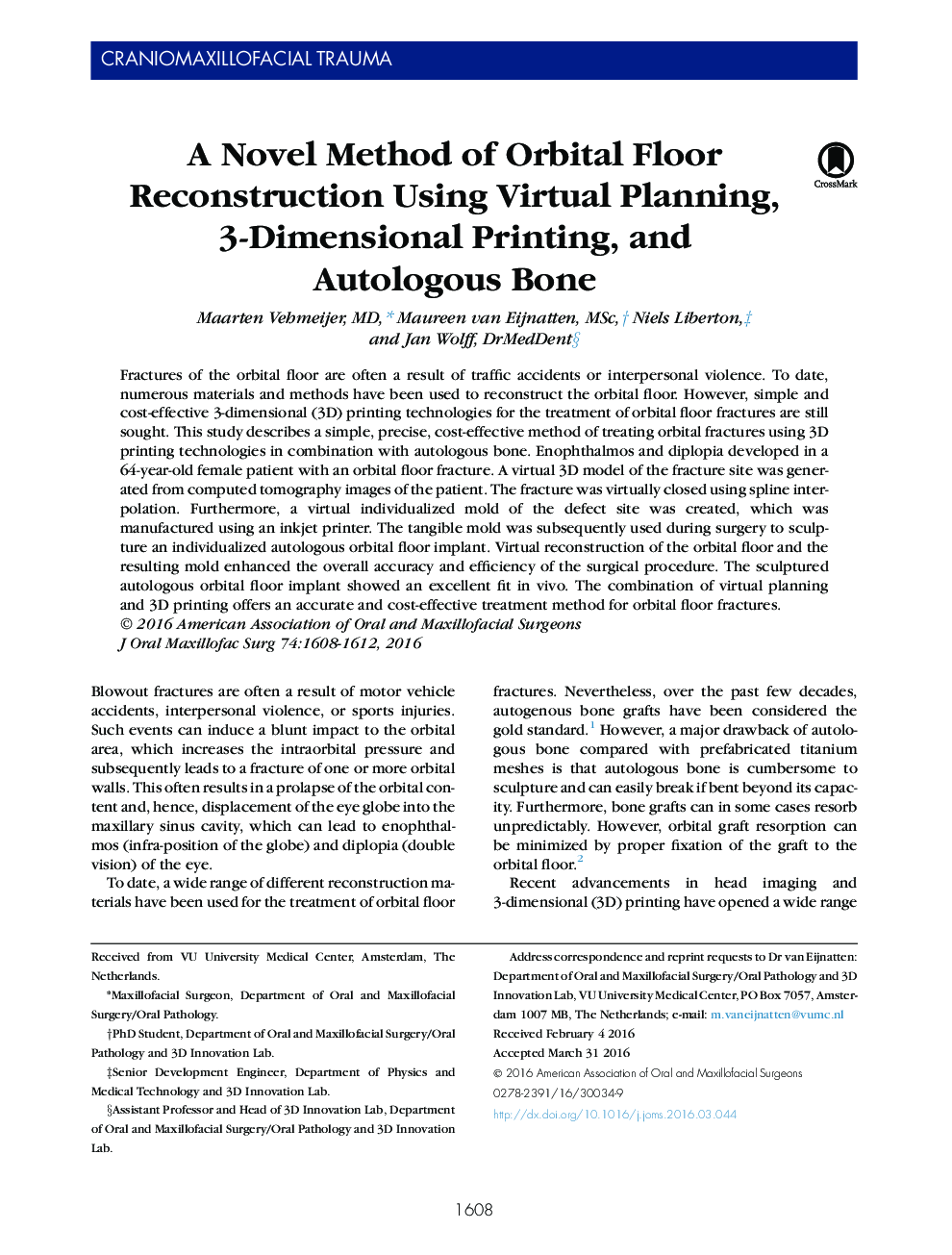| Article ID | Journal | Published Year | Pages | File Type |
|---|---|---|---|---|
| 3155415 | Journal of Oral and Maxillofacial Surgery | 2016 | 5 Pages |
Fractures of the orbital floor are often a result of traffic accidents or interpersonal violence. To date, numerous materials and methods have been used to reconstruct the orbital floor. However, simple and cost-effective 3-dimensional (3D) printing technologies for the treatment of orbital floor fractures are still sought. This study describes a simple, precise, cost-effective method of treating orbital fractures using 3D printing technologies in combination with autologous bone. Enophthalmos and diplopia developed in a 64-year-old female patient with an orbital floor fracture. A virtual 3D model of the fracture site was generated from computed tomography images of the patient. The fracture was virtually closed using spline interpolation. Furthermore, a virtual individualized mold of the defect site was created, which was manufactured using an inkjet printer. The tangible mold was subsequently used during surgery to sculpture an individualized autologous orbital floor implant. Virtual reconstruction of the orbital floor and the resulting mold enhanced the overall accuracy and efficiency of the surgical procedure. The sculptured autologous orbital floor implant showed an excellent fit in vivo. The combination of virtual planning and 3D printing offers an accurate and cost-effective treatment method for orbital floor fractures.
